The Importance of Container Ramps for Efficient Container Unloading
Date Posted:15 May 2024
By providing a safe and stable transition from container to loading dock, ramps streamline operations, enhance productivity, and minimize the risk of workplace accidents.
Container unloading is a critical process in the logistics and warehouse industry, facilitating the movement of goods from shipping containers to storage facilities or distribution centers. However, the task comes with its own set of challenges, particularly when it comes to accessibility and safety. This blog explores why container ramps are indispensable tools for container unloading, offering solutions to overcome common hurdles and enhance operational efficiency.
The Accessibility Challenge
One of the primary challenges of container unloading is the difference in height between shipping containers and loading docks. Without proper equipment, such as container ramps, accessing the contents of a container becomes a daunting task. Container ramps bridge this gap, providing a smooth transition from the container floor to the loading dock. This accessibility not only simplifies the unloading process but also ensures the safety of workers and equipment.
Enhancing Efficiency
Efficiency is key in the fast-paced world of logistics. Every minute saved in the unloading process translates to increased productivity and cost savings. Container ramps play a crucial role in streamlining operations by expediting the unloading process. With the use of ramps, forklifts and pallet jacks can easily enter the container, retrieve goods, and transport them to their designated storage area. This seamless flow of operations minimizes delays and maximizes throughput, ultimately improving overall efficiency.
Safety First
Safety should always be a top priority in any workplace environment, and container unloading is no exception. Manual handling of heavy loads or improvised unloading methods pose significant safety risks to workers and equipment. Container ramps provide a safe and stable surface for equipment and personnel, reducing the likelihood of accidents and injuries. Additionally, ramps with anti-slip surfaces and sturdy construction further enhance safety by ensuring secure footing and stability during the unloading process.
Versatility and Adaptability
Container ramps are designed to accommodate various container sizes and types, making them highly versatile tools for container unloading. Whether dealing with standard shipping containers, high-cube containers, or specialized containers, there is a ramp solution available to meet the specific requirements. Furthermore, container ramps can be deployed in a variety of settings, including warehouses, distribution centers, docks, and construction sites, offering flexibility and adaptability to different operational environments.
Cost Savings and Efficiency Gains
Investing in container ramps is not just a matter of convenience; it's also a sound business decision. By reducing unloading times and minimizing labor costs associated with manual handling, container ramps contribute to significant cost savings in the long run. Moreover, the efficiency gains achieved through proper ramp utilization translate into improved customer satisfaction, as goods are delivered in a timely manner, leading to repeat business and positive brand reputation.
Compliance and Liability Mitigation
Adherence to workplace health and safety regulations is essential for businesses operating in the logistics and warehouse industry. Container ramps help ensure compliance with these regulations by providing a safe working environment for employees involved in container unloading. By investing in quality ramps and following industry standards and best practices, businesses can mitigate liability risks associated with workplace accidents and injuries, protecting both their employees and their bottom line.
Real-world Examples
Numerous businesses have experienced the benefits of using container ramps in their operations. For example, a distribution center implemented container ramps to streamline their unloading process, resulting in a 20% reduction in unloading times and a significant decrease in workplace injuries. Similarly, a construction site utilized ramps to access materials stored in shipping containers, improving efficiency and minimizing downtime.
In conclusion, container ramps play a crucial role in container unloading operations, offering solutions to common challenges such as accessibility, safety, and efficiency. By providing a safe and stable transition from container to loading dock, ramps streamline operations, enhance productivity, and minimize the risk of workplace accidents. Investing in quality container ramps is not just a matter of convenience; it's a strategic decision that leads to cost savings, efficiency gains, and regulatory compliance. In the dynamic world of logistics and warehousing, container ramps are indispensable tools for businesses looking to optimize their operations and stay ahead of the competition.




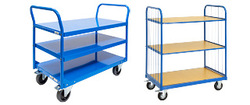




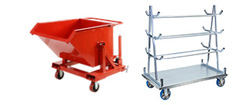

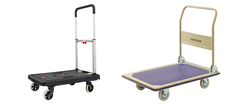
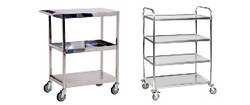

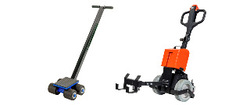
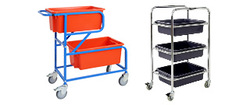
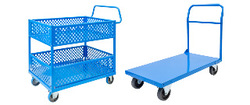
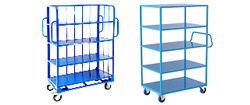
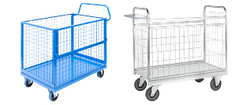
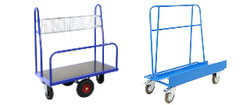
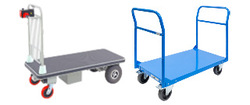
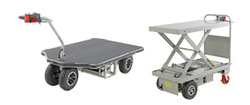

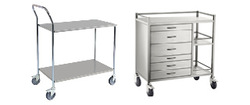
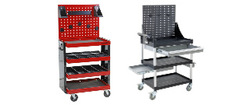
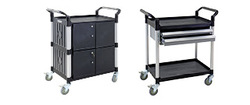
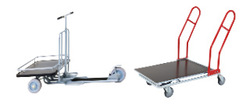
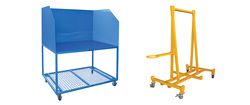



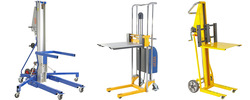



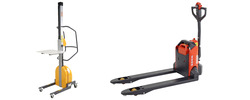
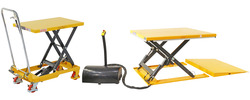
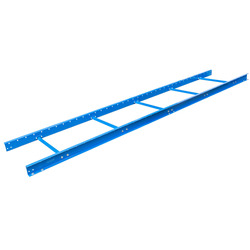
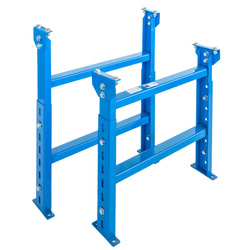

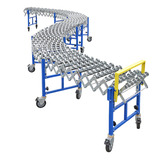




















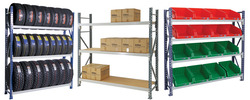
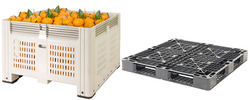

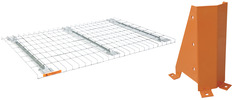
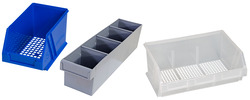



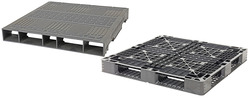

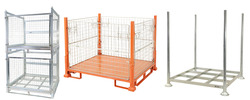








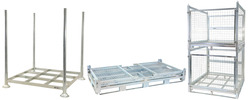
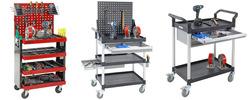














 Trolleys / Hand Trucks
Trolleys / Hand Trucks 2 Tier Trolleys
2 Tier Trolleys 3 Tier Trolleys
3 Tier Trolleys Aluminium Trolleys
Aluminium Trolleys Appliance & Hand Trucks
Appliance & Hand Trucks Cage Trolleys
Cage Trolleys Cleaning Carts & Trolleys
Cleaning Carts & Trolleys Construction Trolleys
Construction Trolleys Dollies
Dollies Foldable Trolleys
Foldable Trolleys Hospital Trolleys
Hospital Trolleys Laundry/Linen Trolleys
Laundry/Linen Trolleys Load Skates & Tow Tugs
Load Skates & Tow Tugs Mail / Office Trolleys
Mail / Office Trolleys Multi Purpose Trolleys
Multi Purpose Trolleys Multi-Tier Shelf Trolleys
Multi-Tier Shelf Trolleys Order Picking Trolleys
Order Picking Trolleys Panel Cart Trolleys
Panel Cart Trolleys Platform Trolleys
Platform Trolleys Powered Trolleys
Powered Trolleys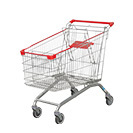 Shopping Trolleys
Shopping Trolleys Stainless Steel Trolleys
Stainless Steel Trolleys Tool Trolleys
Tool Trolleys Utility Carts
Utility Carts Warehouse Trolleys
Warehouse Trolleys Custom Trolleys
Custom Trolleys Lifting Equipment
Lifting Equipment Forklift Attachments
Forklift Attachments Jib Attachments
Jib Attachments Lifting Hoists & Pallet Hooks
Lifting Hoists & Pallet Hooks Manual Stackers & Lifters
Manual Stackers & Lifters Pallet Jacks
Pallet Jacks Pallet Lifters
Pallet Lifters Pallet Rotators & Dispenser
Pallet Rotators & Dispenser Powered Pallet Trucks & Electric Lifters
Powered Pallet Trucks & Electric Lifters Scissor Lift Trolleys and Tables
Scissor Lift Trolleys and Tables Conveyor Equipment
Conveyor Equipment Conveyor Frames
Conveyor Frames Conveyor Stands
Conveyor Stands Roller Conveyors
Roller Conveyors Skate Wheel Conveyors
Skate Wheel Conveyors Access Equipment
Access Equipment Container & Yard Ramps
Container & Yard Ramps Step Stools & Ladders
Step Stools & Ladders Work Platforms & Crane Cages
Work Platforms & Crane Cages Drum Handling
Drum Handling Drum Storage & Bunding
Drum Storage & Bunding Drum Trolleys & Lifters
Drum Trolleys & Lifters Forklift Drum Handling
Forklift Drum Handling Containment & Spillage
Containment & Spillage Aerosol Cans Storage Cages
Aerosol Cans Storage Cages Bunded Pallets & Storage
Bunded Pallets & Storage Corrosive Goods Storage Cabinets
Corrosive Goods Storage Cabinets Flammable Liquid Cabinets
Flammable Liquid Cabinets Forklift Gas Storage Cages
Forklift Gas Storage Cages Gas Cylinder Storage
Gas Cylinder Storage Site Storage
Site Storage Spill Kits
Spill Kits Stillage Cages
Stillage Cages Waste Handling
Waste Handling Bin Lifters & Tippers
Bin Lifters & Tippers Plastic Waste Bins and Carts
Plastic Waste Bins and Carts Steel Waste and Tipping Bins
Steel Waste and Tipping Bins Storage Equipment
Storage Equipment 750 Series Cage Configurations
750 Series Cage Configurations Heavy Duty Cabinets & Benches
Heavy Duty Cabinets & Benches Heavy Duty Shelving
Heavy Duty Shelving Mega Bins & Pallets
Mega Bins & Pallets Packing Benches
Packing Benches Pallet Racking Accessories
Pallet Racking Accessories Parts Trays & Stor-Pak Bins
Parts Trays & Stor-Pak Bins Pegboard & Louvre Panels
Pegboard & Louvre Panels Plastic Bins
Plastic Bins Plastic Handling Solutions Bins
Plastic Handling Solutions Bins Plastic Pallets
Plastic Pallets Stack & Nest Bins
Stack & Nest Bins Storage Cages
Storage Cages Workplace Equipment
Workplace Equipment Workbenches
Workbenches Modular Workbenches
Modular Workbenches Electric Height-Adjustable Workbenches
Electric Height-Adjustable Workbenches Floor Matting
Floor Matting Industrial Weighing Scales
Industrial Weighing Scales Pallet Wrapping & Packaging Machinery
Pallet Wrapping & Packaging Machinery Ramps
Ramps Stationery Cupboards
Stationery Cupboards Storage and Stillage Cages
Storage and Stillage Cages Tool Trolleys
Tool Trolleys Tooling Cabinets
Tooling Cabinets Wheelie Bins
Wheelie Bins Workshop Equipment
Workshop Equipment Safety Equipment
Safety Equipment Gloves and PPE
Gloves and PPE Pallet Rack Post Protectors
Pallet Rack Post Protectors Safety Barriers & Bollards
Safety Barriers & Bollards Safety Knives & Cutters
Safety Knives & Cutters Signs and Traffic Supplies
Signs and Traffic Supplies Tool & First Aid Boxes
Tool & First Aid Boxes Construction Equipment
Construction Equipment Concrete Equipment
Concrete Equipment General Site Equipment
General Site Equipment Lifting Equipment
Lifting Equipment Site Storage
Site Storage Waste
Waste 










